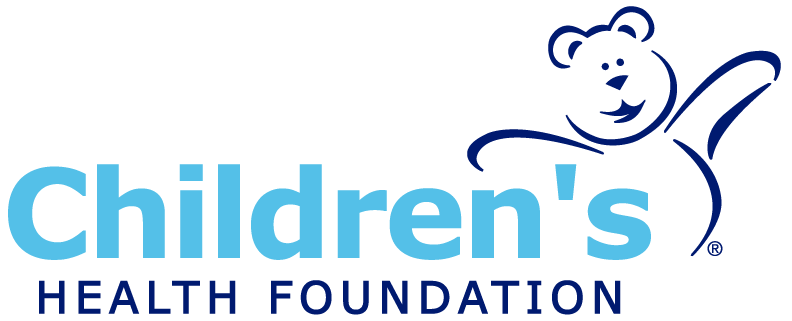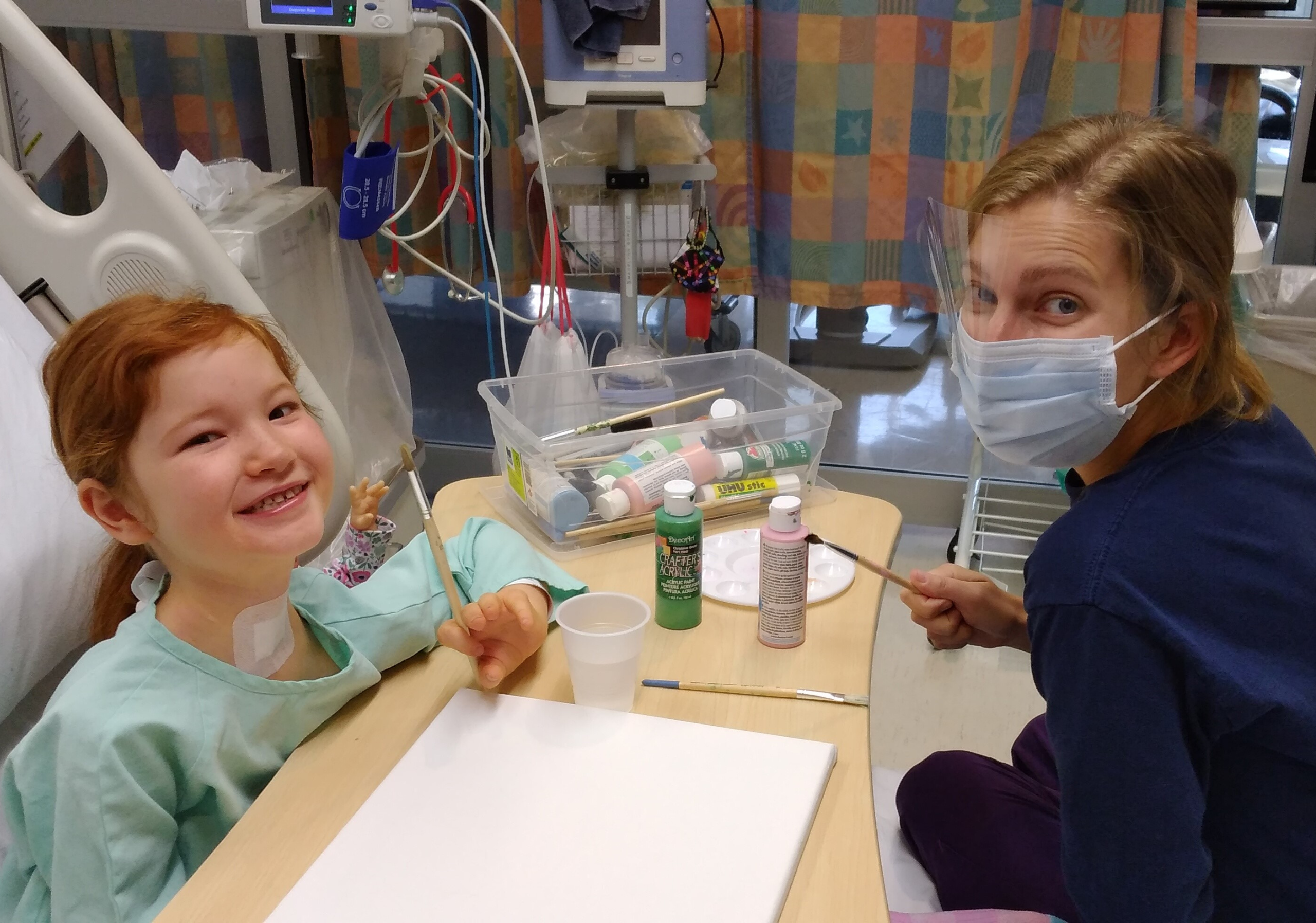
Along the centre of Maia’s chest runs a long and bold red scar – and she is fiercely proud of it.
“I call it my warrior wound,” says Maia. “It’s the physical proof of what I survived and I’m so grateful for the care I received.”
Maia was born two months premature and weighing a mere 3lbs 15oz. Her prematurity caused complications, including ear and eye issues and life-threatening congenital heart defects. She needed intensive care and then open-heart surgery at seven months old.
Maia is among a growing number of children who, through modern medicine, are surviving conditions that were unsurvivable in the past and growing up with a close relationship with the health care system.

Following her surgery, Maia needed ongoing care from Children’s Hospital.
“In Grade 3, I remember her standing in front of her class with her bravery beads, sharing what each of them represented – the bloodwork, transfusions, echoes, needles and the surgery that she had experienced,” recalls Maia’s mom, Kim. “It was a lot for a little kid, but she’s come to a place where she owns her story.”
Kim believes that the welcoming and supportive environment at Children’s was crucial in supporting Maia’s development.
Children’s Hospital is transformed from a sterile, scary and overwhelming facility into a second home by dedicated staff, poke free play spaces, calming nature areas and child and family-centred programs, like Ollie the Clown, Music and Art Therapy, and Child Life. Aside from the staff, most of these are considered ‘extras’ in tight health care budgets. They are only possible through complete or part funding by caring and generous donors to Children’s Health Foundation.
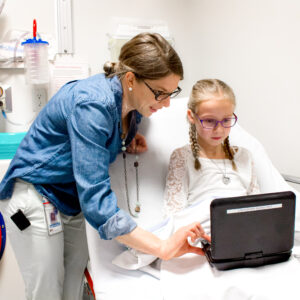
Karen Groeneweg has worked as a Child Life Specialist at Children’s Hospital for 15 years. She says it’s critical for patients’ well-being to have a hospital environment that is as normal as possible for children.
“Frequent hospitalization can negatively influence a child’s physical, social, emotional and cognitive development,” says Karen. “Being confined to a bed, requiring care in an isolation room, experiencing a trauma, worrying about their survival – all of these difficult experiences can have a long-term impact.”
Hospitalized children can miss important milestones. They are at an increased risk of mental health issues, including anxiety and depression. And they are also at increased risk of bullying involvement.
Child Life Specialists are certified professionals trained to mitigate the effects of frequent hospitalization. They utilize the vast applications of play to promote psychosocial and emotional well-being in children. From educating children about their diagnosis to preparing them for procedures to planning special holiday events and supporting peer interactions, every day looks different for Child Life Specialists.
“Some people might think our job is to make patients happy but that’s not our focus,” says Karen. “We bring something really unique into the room. We have no medical agenda, and we are able to just sit with kids in their challenging moments. Whether they are sad, mad, frustrated or overwhelmed, we validate their experience, help them feel heard and build their coping skills.”
This past year, 23 Child Life Specialists supported children during nearly 21,400 sessions, a significant increase over five years ago. Children’s Hospital is caring for more children than ever before, as a result of a rising population (London is one of Canada’s fastest growing cities) and increased survivorship.
“In addition to the increased numbers, we are also finding that since the global pandemic, children and families are requiring more time and energy to help develop strong coping skills,” says Karen. “Given the pressures on the program, we frequently have to triage.”
Donor support helped to add two additional positions in 2022 and Child Life hopes to further build program capacity in the future.
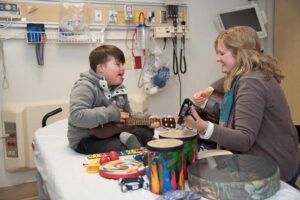
The Music Therapy Program has also experienced a high demand for services and was able to expand through increased donor support in 2022.
This unique therapeutic avenue uses a child or youth’s connection with music as the foundation to improve areas of health, development, and well-being.
“What makes Music Therapy distinct is that it can address a plethora of needs and goals with patients from infancy to adolescence,” says Karina Charczuk, Music Therapist with Children’s Hospital.
For an infant, music can positively impact their heart rate, respiratory rate, and stress levels, while also helping them to bond with their parent. While for a teen, it might offer an outlet to open up about living with anorexia and how their condition affects them and their loved ones.
Of the child and family-centred programs, Ollie the Therapeutic Clown left the most lasting impression on Maia. Ollie uses humour, magic, play and creative expression to create a personal and trusting atmosphere between hospital workers and patients.
“Maia doesn’t have a lot of vivid memories as a young child but one she can remember is seeing Ollie. He would come into the cardiology waiting room to bring children laughter and relief,” says Kim.
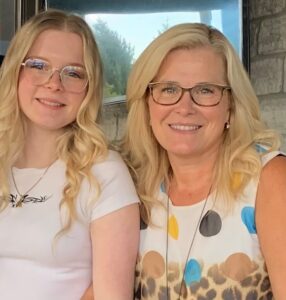
Both Kim and Maia are also quick to add that the supportive environment of Children’s Hospital isn’t just lost when a patient turns 18 either. Maia, now 20, recently graduated to adult care.
“The transition of care was seamless,” says Maia. “They started preparing us when I was 17 years old. They matched me with a cardiologist I was comfortable with and who specializes in my exact defect. They set me up perfectly so that I would be taken care of properly.”
From day one through to her final day receiving care from Children’s Hospital, Maia and Kim say the care has been incredible.
“And donors are part of that,” says Kim. “You safeguard our children’s well-being through child and family-centred programs, while simultaneously pushing care forward to new heights so that the future is brighter. We are truly grateful.”
To read more stories from our celebrations! magazine click here.
